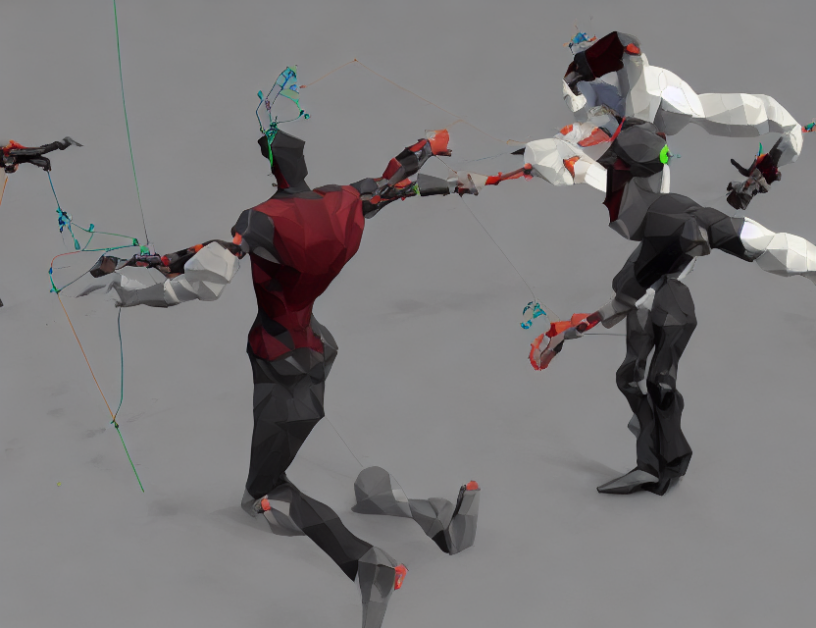In this article, researchers aim to accurately capture human motion outdoors using a unique approach that combines inverse kinematics and von Mises-Fisher sampling. They built a high-end camera system with 32 cameras to capture 4K videos at 60 frames per second, along with an Xsens DOT IMU sensor mounted on the object being tracked. The system calibrates once every 10 minutes to eliminate magnetic field changes.
The researchers invited 15 subjects to participate in 10 different interaction scenarios, providing sequence-level textual guidance for each capture split to ensure meaningful and reasonable interactions. Each split lasted between half a minute to one minute. The article highlights the effectiveness of this approach in capturing human motion with high accuracy, even in outdoor environments with varying lighting conditions.
To understand how this works, imagine a dance between cameras and sensors, where they work together like two partners in a waltz. The cameras capture the movement of the subject from different angles, while the sensor tracks the object’s inertia at 60 Hz. Together, they create a detailed picture of the subject’s motion, like a choreographer directing a ballet.
The researchers use inverse kinematics to infer the joint locations of the human body based on the camera observations. It’s like solving a puzzle, where each piece represents a camera view and the goal is to find the correct position for each joint. Meanwhile, von Mises-Fisher sampling provides an efficient way to handle the complexity of human motion by representing it as a probability distribution. Imagine a game of chance where you throw a dice multiple times, and each roll represents a single frame in the video. The more throws you make, the more accurate your estimate becomes.
The article demonstrates that this approach can accurately capture human motion even when the subject is moving rapidly or the lighting conditions are challenging. It’s like trying to take a photo of a fast-moving car at night; the camera needs to be able to adjust quickly and accurately to capture the subject’s movement.
In summary, this article presents an innovative approach to outdoor human motion capture using inverse kinematics and von Mises-Fisher sampling. By combining these techniques with a high-end camera system and IMU sensor, researchers can accurately capture human motion in various environments, even when lighting conditions are challenging. It’s like a dance between cameras and sensors, working together to create a detailed picture of human motion.
Computer Science, Computer Vision and Pattern Recognition
Realtime Human Motion Capture Using Inverse Kinematics and von Mises-Fisher Sampling



